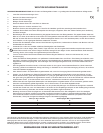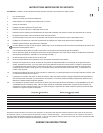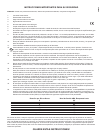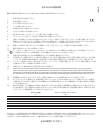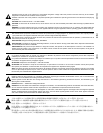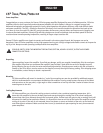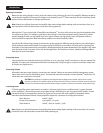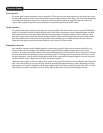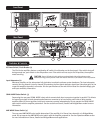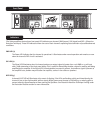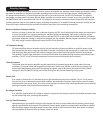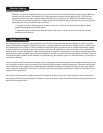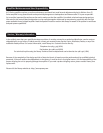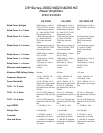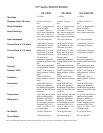
Stereo Operation
For stereo (dual channel) operation, turn the amplifier OFF and set the mode select switches on the back panel to the
out (extended) position. In this mode, both channels operate independently of each other, with their input attenuators
controlling their respective levels. Thus, a signal at channel A’s input produces an amplified signal at channel A’s
output, while a signal at channel B’s input produces an amplified signal at channel B’s output.
Parallel Operation
For parallel (dual-channel/single input) operation, turn the amplifier OFF and set the connector mode (CONN MODE)
switch to the parallel position by depressing the switch. Both input connectors are then strapped together and drive
both channels with the same input signal. Because both connectors are strapped together, either connector can be
used with a patch cable to drive the input of another amplifier. Output connections are the same as in Stereo mode.
Both input attenuators remain active when in Parallel mode, allowing you to set different levels for each channel.
Power and other general performance specifications are the same as in Stereo mode.
Bridged Mono Operation
Both amplifier channels can be bridged together to make a very powerful single-channel monaural amplifier. Use
extreme caution when operating in the bridged mode; potentially lethal voltage may be present at the output
terminals. To bridge the amplifier, depress the rear panel Bridge switch to the IN position. Direct the signal to channel
A’s input and connect the speakers across the hot outputs (the “+” binding posts) of channels A and B. Only channel
A’s input attenuator is active while in Bridge Mono mode. Both connectors are strapped together, so either connector
can be used with a patch cable to drive the input of another amplifier.
Unlike the stereo mode, in which one side of each output is at ground, both sides are hot in bridged mode. Channel A’s
side is the same polarity as its input with the minimum nominal load impedance being 4 ohms (equivalent to driving
both channels at 2 ohms) in bridged mode. Driving bridged loads of less than 4 ohms will activate the DDT
™
circuitry
(see Indicators section), resulting in a loss of power, and may also cause a thermal (overheating) overload.
Operation Modes



